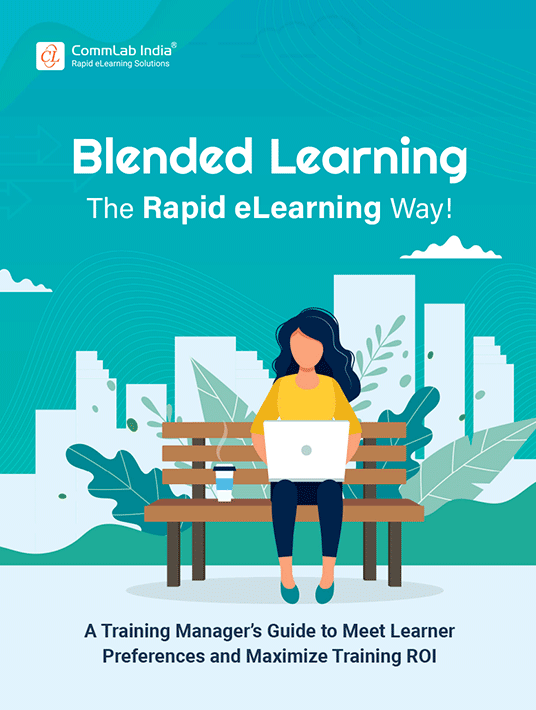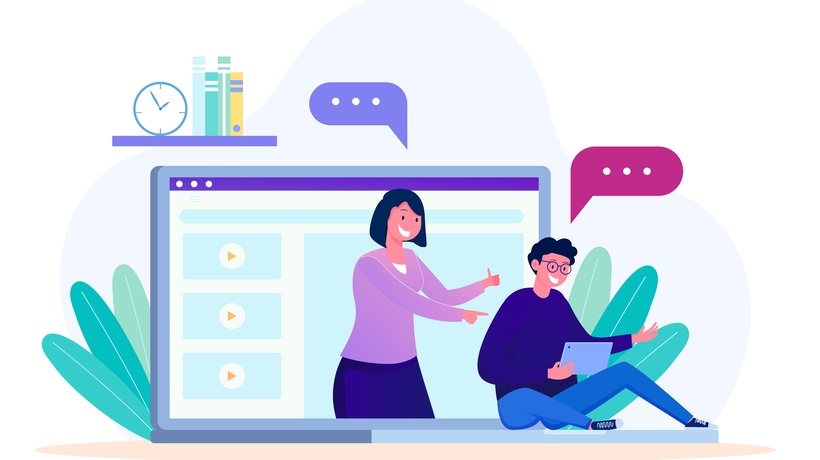Some Sage Advice For Designing A Blended Learning Program
Is blended learning really just about bringing online learning assets and classroom elements together? Definitely not! A lot needs to be considered while designing a blended learning program, starting from identifying the specific training need and the state of learning infrastructure to determining what content would fit well for different training formats.
So, let’s find out how you can blend it like Beckham and create high-impact blended learning programs for corporate training.

4 High-Level Considerations To Design A Blended Learning Program
Our blended solutions should enable learners to achieve the required level of performance (proficiency) as efficiently as possible. To be specific, they should:
- Leverage the best of both approaches to maximize benefits
- Streamline the time and cost required to reach proficiency
- Facilitate access to learning when needed, just in time
- Appeal to and address different learning modalities
- Make learning a guided process, not a one-time event
To be able to do so, you’ll have to ensure the following design considerations.
1. Specify The Training Need/Objective
The learning objectives (what we want learners to be able to do by the end of the training) should be the most important factor while designing the blend. Don’t go for specific technologies just because they look good or are the ‘in’ thing. Focus instead on elements that will help you achieve the learning objectives.
Here are a few questions that’ll help you identify the training need and achieve the desired business results:
- What do you want your learners to take away when they complete the blended learning program?
- Do your learners need a specific skill?
- What content do you think should be included in the blended learning program?
- What instructional methods and tools should be used for different elements of the blend?
It’s extremely important to nail the goals or objectives at the onset because they’ll serve as the roadmap to design your blended learning program design. It’ll help you gauge where your program is headed and create content that addresses these objectives.
2. Analyze Target Audience
Analyzing and understanding your target audience, and when and where they would use the learning is important. The formats used should depend on how comfortable learners are with technology.
If learners are not very tech-savvy, an eLearning course with complex interactivities would not be right for them. On the other hand, for the Gen Y and Gen Z workforce, experts at using electronic gadgets, eLearning is the best option with online programs containing games and videos to keep them engaged.
Here are a few things you should find about your target audience for the effective design of your blended learning program.
Where are they located? If learners are geographically dispersed, you may need to rely mostly on digital learning elements – eLearning, microlearning, online learning assets, and VILT (to replace in-person instruction). You can use virtual platforms to conduct meetings and discussions to facilitate real-time conversations even with a physical distance.
How tech-savvy are your learners? Do they have prior experience of communicating and collaborating online or even eLearning for that matter? If not, it makes more sense to get their buy-in and generate enthusiasm by orienting them, offering trailer videos on the benefits of digital learning, warm sessions for VILT, and more.
Where will they take the training? This is important to decide the usage of audio and multimedia. For instance, if your employees are going to be in a noisy factory, your eLearning courses should have less audio.
3. State Of Learning Technology Infrastructure And Their Use
You should determine the state of your learning technology infrastructure – LMS, virtual platforms, mobile devices, PCs or laptops, social collaboration tools –and how your learners will use them. You also need to figure out how technology will fit into in-person activities.
Do you have a new-age LMS that’ll help you host, roll out, manage, and track learning interventions? Your LMS is not only crucial for digital training elements and virtual training but also online classroom – schedule sessions, enroll learners, send notifications, offer additional learning resources, and much more!
Will learners access online resources on their laptops or mobile devices (offered by the organization or their own)? Information about the devices being used by your learners will help in designing digital learning assets that offer optimal mobile learning experiences.
Do you have a preferred platform/tool/software for virtual ILT sessions – Microsoft Teams, Google Meet, Adobe Connect, WebEx? Pick one with features that are important – screen sharing, recording, whiteboards, annotations, breakout rooms. It should also be easy to sync with your LMS for hassle-free management.
4. Create A Template That Tells Which Content Should Go Where
Once you have all the information in place – training objectives, target audience, content, and learning infrastructure – it’s time to figure out what kind of content should go where in the blended learning program.
A Tip to Success
You should also take a look at your content to ensure you have everything in place. A few situations you might encounter or decisions to be taken include:
- Filling content gaps with the help of subject matter experts
- Updating content
- Repurposing lengthy courses to microlearning
- Designing job-aids from classroom training material
A More In-Depth Method – The Job Task Inventory Template
A job task inventory can help you quickly design a blended learning approach. Let’s look at how this works. For each job task associated with the role learners need to be trained on, find out the following in collaboration with your stakeholders.
- Frequency. How frequently the task is performed on the job.
- Importance. How important the task is to the overall effectiveness of performing the job.
- Learning. How easy or difficult it is to master the task.
- Risk. What is the risk associated with performing the task incorrectly?
Interpreting The Parameters
This will give you some clues – for example, if all 4 parameters rank high, your blended learning approach must have in-person training (ILT or VILT) with demonstrations, plenty of opportunities for practice, immersive eLearning courses, coaching, assessments with feedback, and on-demand access to performance support. On the other hand, if all 4 parameters rank low, microlearning modules and performance support tools will suffice.
Helping The SME
While these expert tips help in creating an effective blended learning program, maximize the limited time of your overburdened SMEs, by using online review apps for quick review and feedback. You can also plan for curriculums instead of standalone courses to avoid repeated meetings.
Download the eBook Blended Learning—The Rapid eLearning Way to get insights on how you can launch a successful rapid blended learning program. Also, join the webinar to learn how to design holistic blended learning solutions for your team.
References:
- 10 Best Practices to Make Corporate Online Training A Success! [SlideShare]
- It’s Time for a Rapid New-age Learning Management System (LMS)
- How to Create Impactful Mobile Learning Courses
- 10 Tips to Save the SME’s Time (and Your Sanity!)









